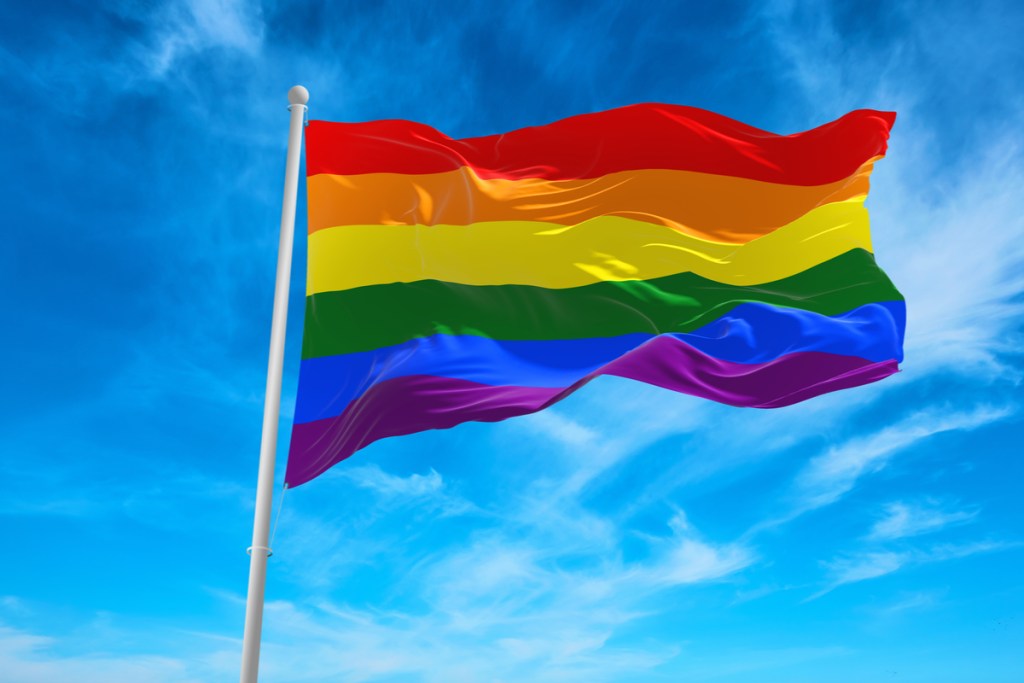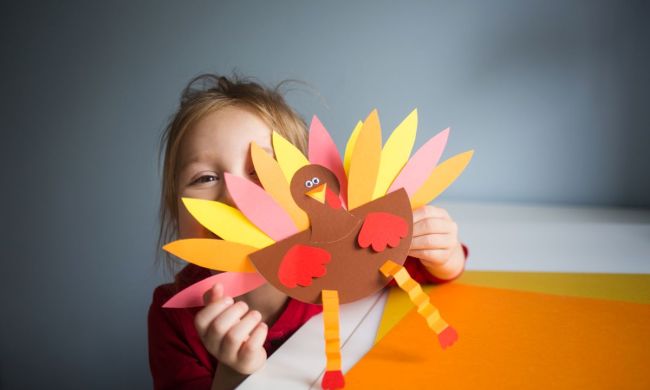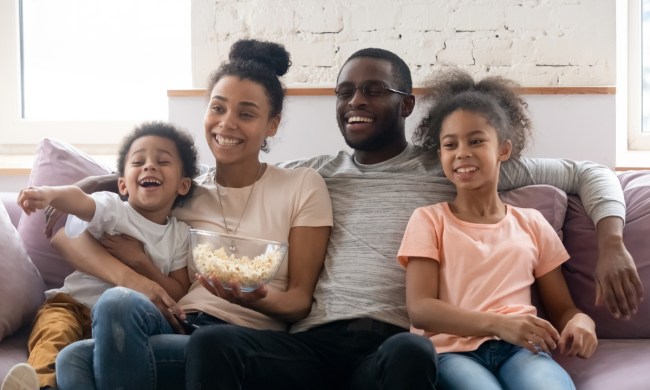
Pride Month is celebrated in June. The month coincides with the Stonewall Uprising in Manhattan in 1969, which is considered to be the catalyst for the Gay Liberation Movement in the United States. Today, times are much different from the ’60s and even the 1980s and 1990s when LGBTQ+ identity wasn’t a topic of conversation. Many parents may struggle with the thought of talking to their kids about LGBTQ+ identity, and that’s okay. The first step is understanding the need, and the second is discovering how to talk to kids about LGBTQ+ identity.
What does LGBTQ+ identity mean?
Before understanding how to talk to kids about LGBTQ+ identity, it’s a good idea to understand what the acronym means. In the later 80s, LGB or lesbian-gay-bisexual took the place of the blanket term gay. In order to be more inclusive, the acronym was expanded in the 90s to LGBT or lesbian-gay-bisexual-transgender.
By the 2000s, the acronym evolved further to be more representative by adding the “Q.” LGBTQ stands for lesbian-gay-bisexual-transgender-queer. The “Q” in the acronym can sometimes refer to “questioning” because people may still be exploring their identity.
In recent years, the plus sign was added to include people whose sexual orientation or gender identity were not defined by the acronym. Since some people within the community don’t think it accurately represents everyone, the acronym may continue to evolve further.

How to talk to kids about LGBTQ+
Now that you have a better understanding of what the LGBTQ+ acronym means, it will be easier to talk to your children when questions arise. When it comes to having an open conversation about LGBTQ+ identity, it’s important to be honest and informed. Unlike adults, kids aren’t uncomfortable about the topic. Children are naturally curious. When questions arise about rainbow flags or when the term LGBTQ+ identity comes up, we have suggestions on how to talk to your kids in a way you and they will be comfortable.
Be prepared
Before you can confidently talk to your children about LGBTQ+ identity, you need to be more informed about the topic. Don’t worry if you’re not. Thankfully, there are several websites to help you be better prepared when your kids ask questions. Here are three you’ll find helpful:
- Welcoming Schools: This website is for parents and teachers, and it includes a detailed webpage with LGBTQ+ definitions geared specifically for children. The website is frequently updated to incorporate changes along with new and helpful information for parents and teachers.
- Queer Kid Stuff: This YouTube series created by Lindsay Amer has a four-part series breaking down the LGBTQ+ acronym in terms kids can understand. Amer’s co-host is a teddy bear. Parents may find it helpful to preview the videos first before sitting down to watch them with their kids.
- Guide to being a Straight Ally: This online resource contains presents, explains, and answers a lot of questions parents may have about LGBTQ+ identity. It’s a good resource to keep bookmarked and refer to if your kids ask questions you aren’t sure about.
Be calm
Kids ask really uncomfortable questions and often at inopportune times. As a parent, you already know that. When LGBTQ+ identity questions come up, address them. If you don’t have an answer, then sit down with your child and try to figure it out or set up a time to revisit the question when you do have an answer along with the time to devote to talking about it. The worst thing to do is to change the subject or ignore the question. You want your kids talking to you and not getting answers about important things from friends, especially with the often-trying tween and teen years on the horizon.
Avoid stereotypes
Society is full of stereotypes, from the toys marketed to children to clothing. Girls’ clothes are pink and purple, and boys’ clothes are blue and green. What happens when girls don’t like pink and want to wear blue? Gender bias typically starts shortly after birth. Growing up, most parents probably heard phrases like, “Don’t throw like a girl” and “Boys don’t play with dolls.” Sporty girls were labeled tomboys, and boys who weren’t proficient in sports or didn’t like them were labeled wimps or girly. The list goes on.
One way to help kids understand LGBTQ+ identity is to avoid stereotyping. Easier said than done, considering many popular television shows, commercials, and marketing campaigns focus on families rooted in those stereotypes, but it’s worth the effort. Welcoming Schools also has a webpage dealing with gender stereotyping and how to respond when kids say things like “boys don’t have long hair” or “only girls wear earrings.” Another way to avoid stereotyping is to use gender-neutral language. For example, instead of moms and dads, use the word parents or caregivers.
Accepting differences
Kids take their cues from their parents, and your reaction is key when questions arise. Ages 8 and 9 are when your child’s classmates may start talking about boyfriends and girlfriends because third-graders are becoming more aware of their identity. This is when they may ask why a teammate on the soccer team has two moms or two dads.
How you answer the question actually tells your child quite a bit. Let kids know that each family is different, and that’s okay. Your home may have a mom and dad, but your child’s best friend may have a single mom or two dads. A child your son or daughter is friends with may be raised by a grandparent. Acceptance goes a long way in understanding LGBTQ+ identity.
Share books on the subject
If you’re uncomfortable with the LGBTQ+ identity conversation, sit down with your child and read a children’s book together on the subject. Sharing books about the LGBTQ+ community can be a great way to celebrate Pride Month, too. Here are some excellent LGBTQ+ reads:
- Pride: The Story of Harvey Milk and the Rainbow Flag by Rob Sanders
- Heather Has Two Mommies by Leslea Newman
- This Day in June by Gayle E. Pitman
- Prince & Knight by Daniel Haack
- Love Makes a Family by Sophie Beer
How to talk to kids
Understanding how to talk to kids about LGBTQ+ identity is just one of the subjects Dr. Robyn Silverman goes into in her parenting podcast How to Talk to Kids About Anything. There’s an episode dealing specifically with gender identity and many more that may help parents tackle those often-difficult conversations with their children.
Understanding how to talk to kids about LGBTQ+ identity
Talking to your kids about LGBTQ identity during Pride Month or when questions arise about rainbow flags or why a friend’s family dynamic seems different is an important conversation to have. Even though you may feel uncomfortable and awkward, 7-, 8-, and 9-year-olds are not. They’re curious and accepting of the growing world around them.
Breaking down stereotypes and embracing differences go a long way toward acceptance. Online resources, videos, podcasts, and children’s books are all helpful resources at your disposal to help you figure out how to talk to kids about LGBTQ+ identity.





